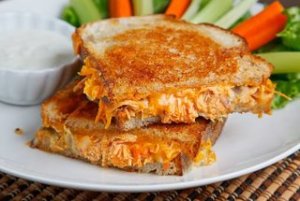One thing that is vital when cooking is understanding food measurements. Whether you’re reading a foreign recipe or buying deli meats and cheeses at the market, a lesson in conversion is pretty helpful. This blog post would have seriously come in handy for me last year when I was studying abroad.
While studying in Montreal, my friends and I decided to celebrate Canadian Thanksgiving, and I was left with the task of cooking the turkey (probably one of the most difficult things I’ve ever cooked before).
When I went to the grocery store, I had come thinking I need a 14 pound turkey to serve everyone. I was surprised to find that I could not buy things in pounds—thanks to America’s alternative to the metric system—but I had to figure out 14 pounds in kilograms. Needless to say, I was lost.
I asked a man behind the butcher counter if he could tell me the conversion, but he responded something in Quebecois French that I could not decipher, and then proceeded to show me a pork leg.
“No,” I said. “Nevermind.”
I called my Dad, who was on the road , if he knew the conversion and that was another deadend.
“Maybe you should call your mother on this one,” he suggested.
So I called my mom, who was just home from work, so she was a little on edge as she settled back into my chaotic house. “Mom, I am at the grocery store, and I have no clue how big I should get my turkey. Can you look up the conversion online for me?”
She searched on my home computer conversion charts for pound to kilo and found all kinds of numbers and equations to help solve my turkey problem. “I think you multiple .45 to whatever the poundage is, or maybe it’s division. Wait a sec this website says something about ounces. Are there ounces on the a label?”
The overload of multiple kinds of information was not helpful. I ended up just picking up four or five turkeys and just guessing.
Though when it came time to cook the turkey, it was a lot more hassle not knowing the weight of the bird. If you’ve ever cooked a turkey you know that for every four pounds of poultry, you cook it for about an hour and a half. I had no idea what the size of my turkey was except for the not-so-exact measurement: big.
To make matters worse, the turkey cooking instructions were in Celsius. Kill me now was all I could think.
In the end, the turkey came out amazing thanks to a lot of patience, intuition, and the motivating smells of deliciousness.
To make it easier on all you studying abroad, however, I’ve included a link to a website that explains and calculates conversion way better than I ever could.
http://www.france-property-and-information.com/metric_conversion_table.htm










